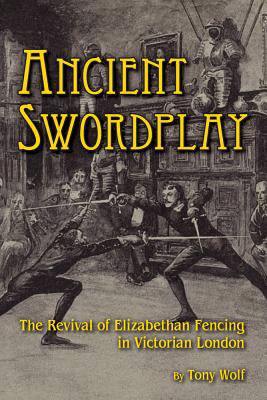
- Afhalen na 1 uur in een winkel met voorraad
- Gratis thuislevering in België vanaf € 30
- Ruim aanbod met 7 miljoen producten
- Afhalen na 1 uur in een winkel met voorraad
- Gratis thuislevering in België vanaf € 30
- Ruim aanbod met 7 miljoen producten
Zoeken
Ancient Swordplay
The Revival of Elizabethan Fencing in Victorian London
Tony Wolf
Paperback | Engels
€ 45,45
+ 90 punten
Omschrijving
In late Victorian England, even as the sword was being rendered useless on the battlefield, swordsmanship was experiencing a unique revival. Captain Alfred Hutton and Egerton Castle, both devoted fencers and amateur historians, led a systematic study and reconstruction of combat with all the weapons of the Elizabethan arsenal - the elegant rapier, deadly sword and buckler, and the massive two-handed sword. Their work found practical expression in classes, exhibitions, academic lectures and theatrical combat, for audiences as diverse as school children, soldiers and the Prince of Wales. Yet for all of their efforts, Hutton and Castle did not establish a tradition of historical swordsmanship that survived their own generation. Instead, their books and essays were largely forgotten until the second revival of ancient swordplay in the late 20th century, and today's researchers often view these early efforts with a cavalier or dismissive eye. In Ancient Swordplay: the Revival of Elizabethan Swordplay in Victorian England, 19th c martial arts scholar, theatrical fight director and martial artist Tony Wolf reexamines Hutton and Castle's work, both through their own words and those of their enthusiasts, students and critics. Rather than earnest but misguided amateur scholars, they are revealed to be the inventors of a systematic study and practice of lost fighting arts that has only been exceeded in recent years, worthy of being celebrated as the true pioneers in the field.
Specificaties
Betrokkenen
- Auteur(s):
- Uitgeverij:
Inhoud
- Aantal bladzijden:
- 196
- Taal:
- Engels
Eigenschappen
- Productcode (EAN):
- 9780982591185
- Verschijningsdatum:
- 30/01/2010
- Uitvoering:
- Paperback
- Formaat:
- Trade paperback (VS)
- Afmetingen:
- 152 mm x 229 mm
- Gewicht:
- 1778 g

Alleen bij Standaard Boekhandel
+ 90 punten op je klantenkaart van Standaard Boekhandel
Beoordelingen
We publiceren alleen reviews die voldoen aan de voorwaarden voor reviews. Bekijk onze voorwaarden voor reviews.








